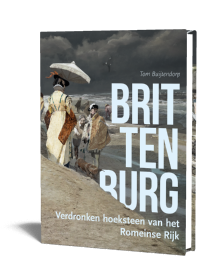Abstract:
This book discusses various aspects of city gates in the Western Roman Empire: Italy, Spain, Gaul, Germany and Britain. In these countries many Roman city gates are to be found, sometimes still in a good condition, like the Porta Nigra in Trier and the Porta Appia in Rome.
Similarly to medieval or early-modern city gates, Roman city gates did not all have the same design but show an evolution over time and depending on the circumstances: sometimes they appear as simple, narrow passages (which were easy to defend), sometimes as impressively monumental complexes (which were comfortable for increased traffic and were comparable in their function to triumphal arches: both served as symbols of urbanitas, expressing Roman power).
But city gates had more functions than being a part of the city defence system and the road infrastructure. In many cases, they played a role in the supply of drinkingwater and the removal of waste water. Furthermore they were connected to social and magico-religious aspects of city life.
This book brings together all available material concerning those city gates in the Roman West that are preserved in a good enough condition to be described and discussed. It focusses on the forms and functions of the gates. In addition, it comprises textual sources (both literary and epigraphic material) containing information on the uses of city gates.
For more information about Roman City Gates, also see www.romancitygates.com
Contents
Acknowledgements
Preface
Introduction
I. Predecessors
1. City gates in the Middle East, Greece and Gaul
II. Forms
2. The first city gates: Wide enough for traffic
3. From single-portalled to three-portalled gates
4. The Empire: Imposing city gate complexes
5. Late Antiquity: Back to city defence
6. Five city gates in more detail
7. Summary
III. Functions
8. City defence
9. Traffic
10. Water management
11. Status and decoration
12. Watching and toll
13. Meeting points and economy
14. Religion and magic
15. Summary
Summary and conclusion
Appendix 1. Dating city gates
Appendix 2. Plans of city gate types
Appendix 3. Dimensions of significant city gates
Bibliography
Indexes

Dr.
Cornelis van Tilburg
Cornelis van Tilburg studied Classics at Leiden University. Since 2000 he is a researcher at Leiden University (LUCAS). His main publications are: Romeins Verkeer (2005, repr. 2014, third edition 2018), Traffic and Congestion in the Roman Empire (2007, repr. 2012), Streets and Streams: Health conditions and city planning in the Graeco-Roman World (2015) and Oudheid, reinheid en gezondheid: Hygiëne in de Grieks-Romeinse wereld (2018).
read more











